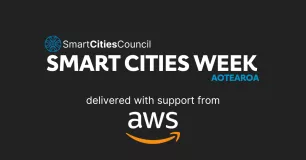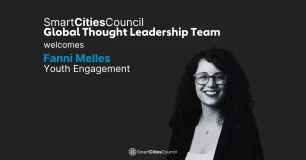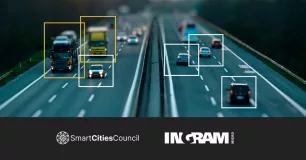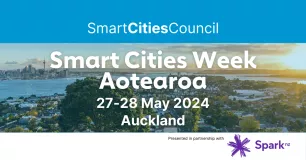
NOTE: This article was written before the inauguration and will be updated with practical advice on how to get 'ready' for Biden Administration smart city and infrastructure grants and opportunities.
Subscribe to get updates (see top right corner of page or drop down above ('Join Us.')
For our US network, this is one in a series of primers from the Smart Cities Council about how your US located community can ‘bounce back’ from your current situation during the Biden Administration. In this article we recommend that -
• It is ‘smart,’ to read what happened with the Obama Administration to understand the Biden Administration.
• It is ‘smart,’ to think resiliency and vulnerable populations.
• It is ‘smart,’ to think regional planning
We conclude this primer with research that shows that this approach will deliver jobs to your community.
Finally- we suggest it would be ‘smart’ to -apply for the next Readiness Challenge, which launches on February 1, 2021. If you are chosen as a Readiness Cohort Leader, the Council will help you in your planning through a collaborative acceleration process – that will prepare you for applying for Federal grant funding under the Biden Administration.
Biden Administration – More of the same, plus.
David Brooks, the conservative columnist with the New York Times calls the prospective make-up of the Biden Administration as ‘Obama 3.’ It does not matter whether you like this or not – the key is to understand that this allows you to plan.
In the Council’s February, 2020 article on all the Presidential Candidates we analyzed what candidate Biden was proposing for ‘smart cities.’ Now, President-Elect Biden, is proposing a $1B competitive grant program for up to five cities, following the example of the US Department of Transportation's Smart City Challenge from 2015. The current proposal is 25 times greater than the DoT $40M grant to Columbus, OH in 2015. The 2015 DoT grant is credited with triggering $500M in investments.
Additional initiatives, for which the Council provided technical input, include:
- The Smart Cities and Communities Act sponsored by Senator Maria Cantwell and Representatives Suzan DelBene (see presentation at Smart Cities Week 2020) and Ben Ray Lujan would help coordinate federal government efforts directed at Smart Cities and provide for demonstration funding, workforce development and promote standards development.
- The Moving First Act sponsored by Senator Catherine Cortez Masto (see presentation at Smart Cities Week 2020) and Representative Mark DeSaulnier would establish the annual Strengthening Mobility and Revolutionizing Transportation (SMART) Challenge Grant to promote innovation in America’s transportation systems.
The competitive grant proposed by President-Elect Biden is very likely regardless as to which party controls Congress, while the Congressional initiatives could depend on who secures control of Congress after the two January 5th run-off elections in Georgia.
So - prepare for smart cities projects ‘now’
As a community leader, you need to start preparing. Who would you partner with to seek a grant? Who are your key academic, commercial and regional allies? Start the work now.
We can remember attending many planning sessions in 2015 where cities recruited industry and academic partners to help them plan and prepare their challenge applications. Keep an eye on Smart Cities Council North America and attend these planning sessions online, thus saving you time and money, especially since you can’t travel.
Resiliency and smart are the same when it comes to technology.
We all know 2020 has been a year of disasters. The pandemic, hurricanes and wildfires have each separately threatened communities while also creating cascading crises, where cities move from emergency response to emergency response.
Add to this - man-made threats such as power-grid attacks, water system attacks, bombings, cyber-terrorism, ransomware demands, and more. In fact, the US Governor’s Association said that cybersecurity attacks were the equivalent of natural disasters in terms of impact and costs and have established a resource center to help states deal with cybersecurity capacity development.
So – add resiliency projects to your list of smart projects
As you plan for future disasters, consider how planning and technology can make your community more disaster proof – or resilient. During our work with Puerto Rico and Texas after Hurricanes Maria and Harvey in 2017, we worked with communities to identify those technology solutions that could make their communities more resilient. You can find the recommendations and a roadmap from our work in Texas, here.
Sensors, instrumentation, data collection and data analysis – the foundation of a ‘smart’ city, are also the foundation of a resilient community. By make a community resilient, you are also, stealing a phrase from IT experts, ‘future proofing’ your community’s digital infrastructure. See links at the end of this article to relevant sessions at Smart Cities Week 2020 about resiliency.
Also - FEMA BRIC Funding still available
Finally, the new FEMA Building Resilient Infrastructure and Communities (BRIC) program will provide an additional $500 million for pre-mitigation activities per this link with applications open through January 29, 2021.
Regional planning is key to being ‘smart.’
When we first published our Readiness Guide in 2015, we published that a best practice was to ‘think big, start small.’ Now, based on so many communities going small and staying small (specifically with their penchant for pilots and living labs,) we think communities should think big and go big. You have to scale your communities endeavors if you want to have a significant positive impact. Going big means looking at the ecosystem your community is part of and aggregating demand.
So – prepare to recruit other communities to help solve your problems
Let me give you an example from Morrisville, NC.
- Morrisville, NC is a small community of 24,000 people outside of Raleigh, NC. As part of its 2020 Readiness Challenge application, it asked for assistance in accelerating a street light project. In our discussions with the senior IT team from Morrisville, they told us that the reason for the project was because traffic congestion is the number one complaint of their residents. As we discussed this problem, it because clear thought, that much of their traffic congestion was caused by commuters in the larger Raleigh traffic corridors.
- The Council suggested that Morrisville consider leading a larger project to improve traffic data collection among the many communities and state agencies and Raleigh-Durham airport – which Morrisville agreed was the best way to improve their own community’s traffic congestion.
- The advantage with this approach is that Morrisville is more likely to attract grant, state and federal funding when they are part of a regional approach and at the same time, they would be sharing data, infrastructure and costs – all of which are important for the project’s sustainability.
Another Readiness Challenge finalist, Orange County, FL (Orlando) is proposing a thirteen (13) city traffic plan – again the plan being to aggregate the needs of the larger ecosystem and work together to plan and develop a business case.
Climate Change Mitigation – Opportunity for jobs
We have all heard that the Biden administration will make the causes and impact of climate change a driver of policy. You should be interested in this from the standpoint of mitigating the risk of natural disasters AND because it will increase employment for your community.
Back in 2016 the Smart Cities Council compiled research showing that building infrastructure required to reduce energy costs, improve water management and decreased carbon emissions (all of these being symptoms of climate crisis) would produce jobs. In fact, our 2016 effort has been confirmed by recent research from the American Flood Coalition and John Hopkins University, which found that for every $1B of water management solutions implemented, 40,000 new jobs are created.
So - prepare project plans using examples from the 2020 Readiness Challenge
Review the projects submitted by our Readiness Challenge finalists for the first quarter 2021. You will find the City of Nashville urban flooding project, along with two massive projects from Orange County (Orlando,) Florida - energy efficiency and traffic planning. You can also find projects about traffic, livability, smart buildings and data sharing.
If you want to access over 500 smart cities projects from around the globe, apply to access Smart Cities Activator here. Cities get free access.
All of these projects will give your city ideas about what your community could do to secure new jobs and mitigate the impact of climate change.
Finally- we suggest it would be ‘smart’ to -apply for the next Readiness Challenge, which launches on February 1, 2021. If you are chosen as a Readiness Cohort Leader, the Council will help you in your planning with assistance from other cities and experts.
Relevant sessions about Resiliency at Smart Cities Week 2020:
- Linda Mastandrea, FEMA Director of the Office of Disability Integration and Coordination, stated in her keynote presentation during Smart Cities Week.
- Non-profits working on making vulnerable populations more resilient:
- Jennifer Gray Thompson from Rebuild North Bay Foundation; and,
- Emily Baranay from Visionality.
Authors
Philip Bane, Managing Director Smart Cities Council
Steve Crout, Director, Policy & Resilience Program, Smart Cities Council



